|
Owning a Jeep Wrangler can be both a blessing and a curse. On the one hand, there is an abundance of aftermarket support for the JK (and increasingly the JL and Gladiator as well) for everything from suspension lifts to engine swaps. On the other hand, all of those options can be a bit overwhelming. Take front bumpers for instance. The days of a piece of C channel on the front frame horns of your Jeep are long gone. Today's "bumper crop" must not only protect the electronic sway bar motor on Rubicons and the crash bar under the frame, but look good while doing it. Looks can be subjective, but we are here to cover some objective features to look for when shopping for a bumper on your Jeep Wrangler. 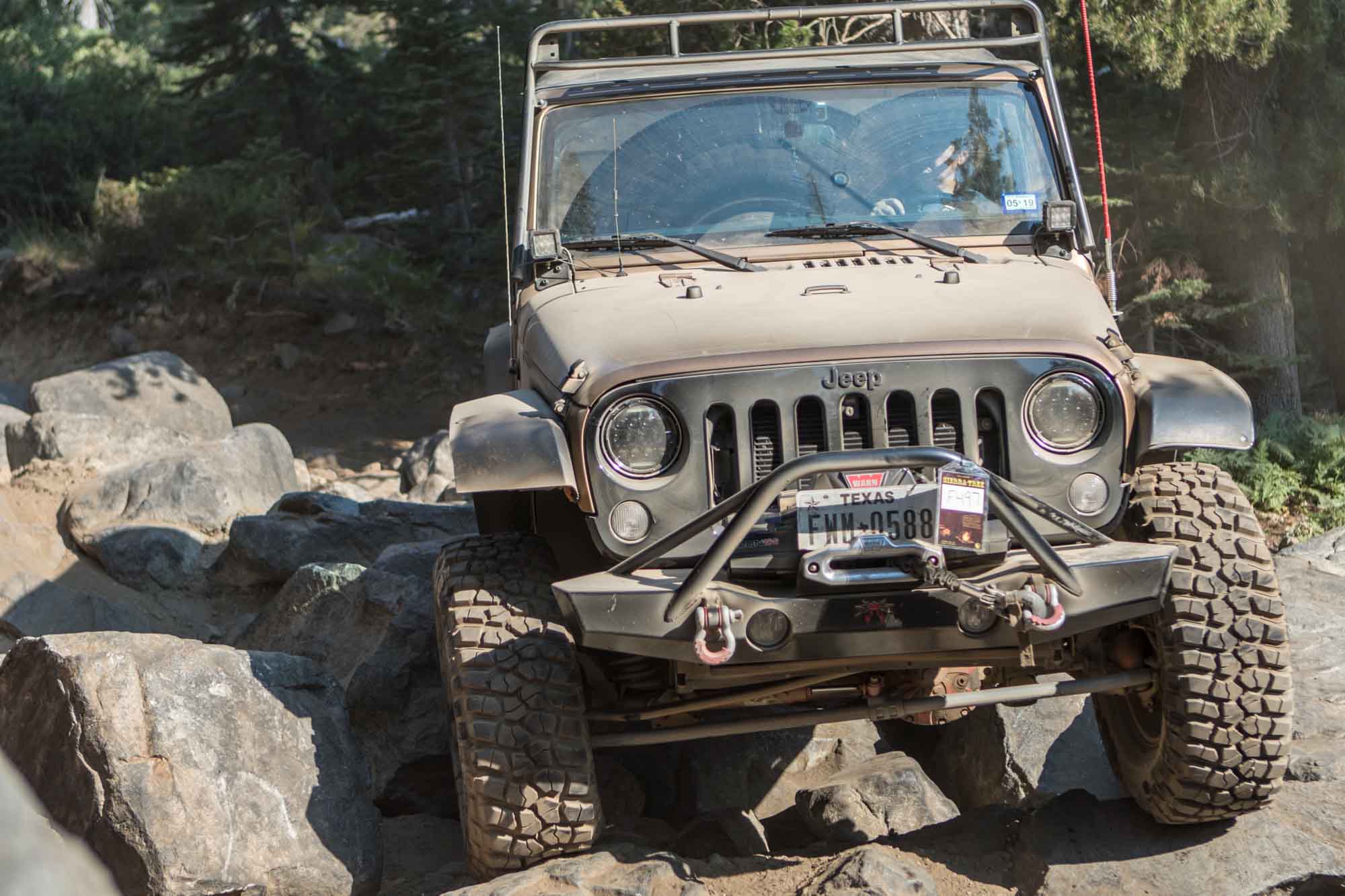 Poison Spyder Customs' Brawler mid-width bumper uses 3/16-inch plate steel, is CNC laser-cut, and precision brake-formed into a low-profile, high-clearance design. The ends of the bumper extend far enough to protect the lower corner of the JK grille, but not far enough to hinder tire clearance or tire access to vertical obstacles. Recessed fog lights and integrated D-ring mounts come standard. The Brawler accepts most common Warn and Smittybilt winches. 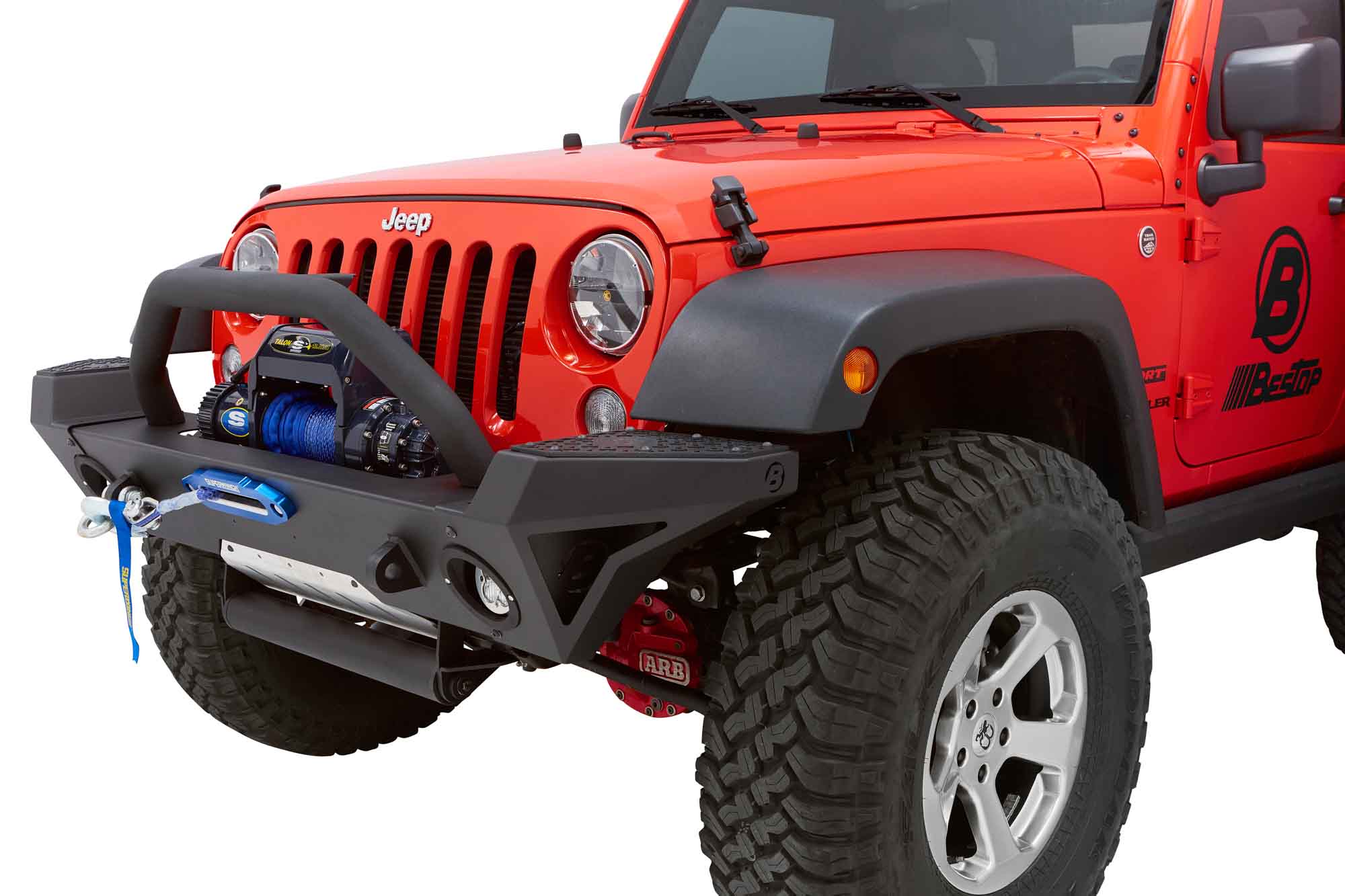 Bestop's Highrock 4x4 Modular Front Bumper Center Section accepts a host of components such as their Tubular Grille Guard, End Caps, Approach Roller Kit, or Skid Plate. These parts are available separately, allowing you to customize the bumper to your specific needs and . It is made from 3/16-inch thick steel and finished in a matte black powder coat finish. It includes features like full welded D-ring mounts and a recessed winch compartment. Approach Angle Unlike truck bumpers, Jeep Wrangler bumpers are available in a variety of different widths, sometimes even from the same manufacturer. The full-width bumpers match the width of the tub and help protect the fenders and body from everything from trees to errant animals in the road. Narrower bumpers don't offer as much protection. But in addition to being lighter, they also improve the approach angle. They allow the tires to reach rocks and other obstacles first rather than the bumper hitting them. Neither style is right or wrong. It is just a matter of which is the best fit for your specific needs. Construction We generally think of heavier being stronger, but there can be diminishing returns. All of that weight hanging off the front of your Jeep can add up, particularly if you also add a winch. Aluminum bumpers are available that weigh a fraction of what steel bumpers weigh. They never rust, but they do cost significantly more than steel bumpers and can bend when subjected to hard off-road use. 3/16-inch thick steel is a good place to start if you plan to use your Jeep in the rocks. In addition to the type of material and thickness, look for bumpers with internal gussets to make them sturdier. Formed bends also provide three-dimensional strength and resist bending. Holes or slots in the bumper can offset added weight from thicker material. These can improve cooling and double as recovery or lifting points in some instances. 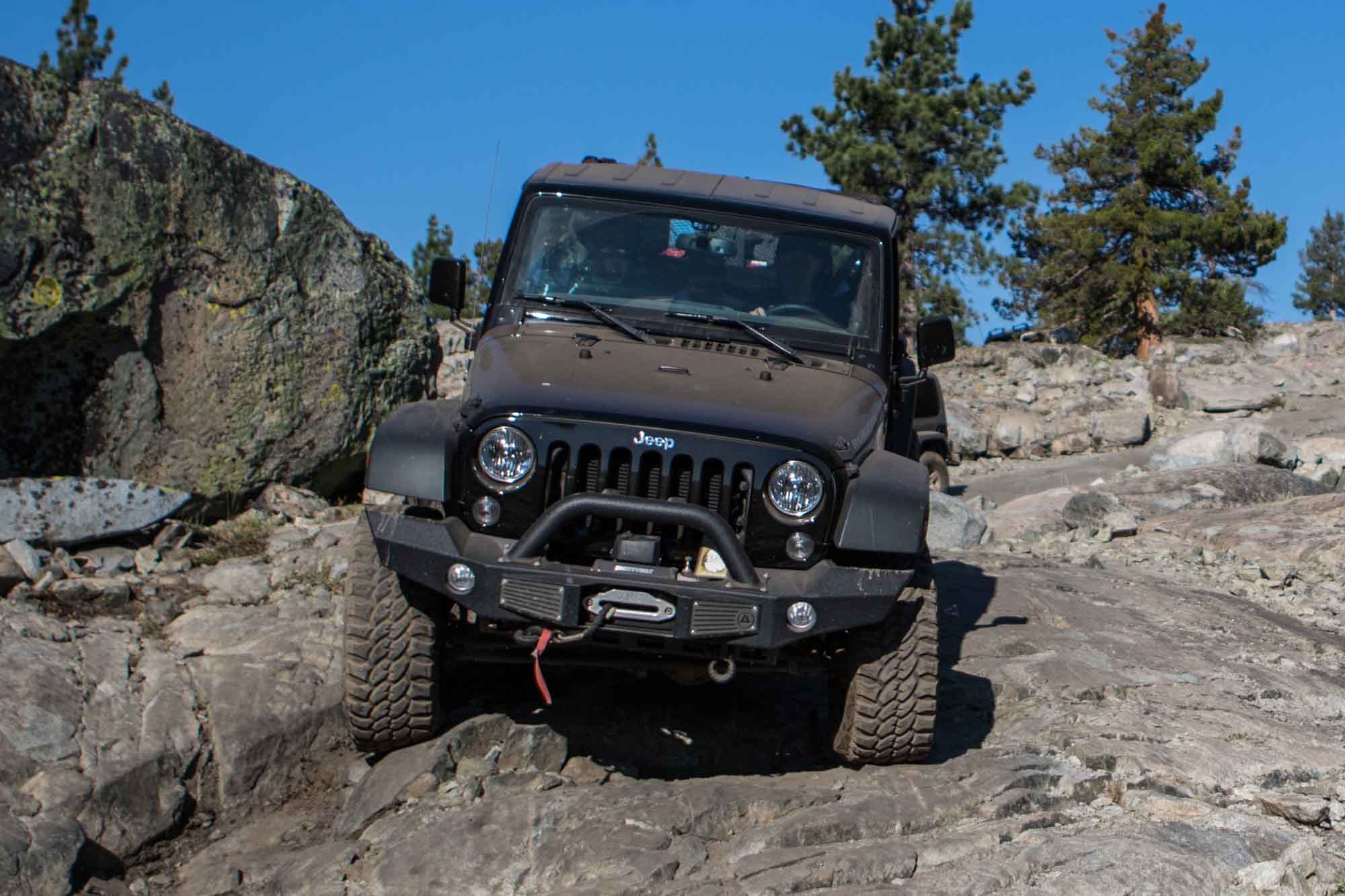 Smittybilt's Atlas bumper is stylish as well as being extremely strong and functional. Their innovative three-piece design lowers the winch plate for improved airflow and bolts directly on to your Jeep. The Altas uses 3/16-inch cold rolled steel and finished with a two-stage matte black powder coat. The bumper includes D-ring mounts and recessed light pockets and even accepts Smittybilt's tow bar for flat towing your Jeep. 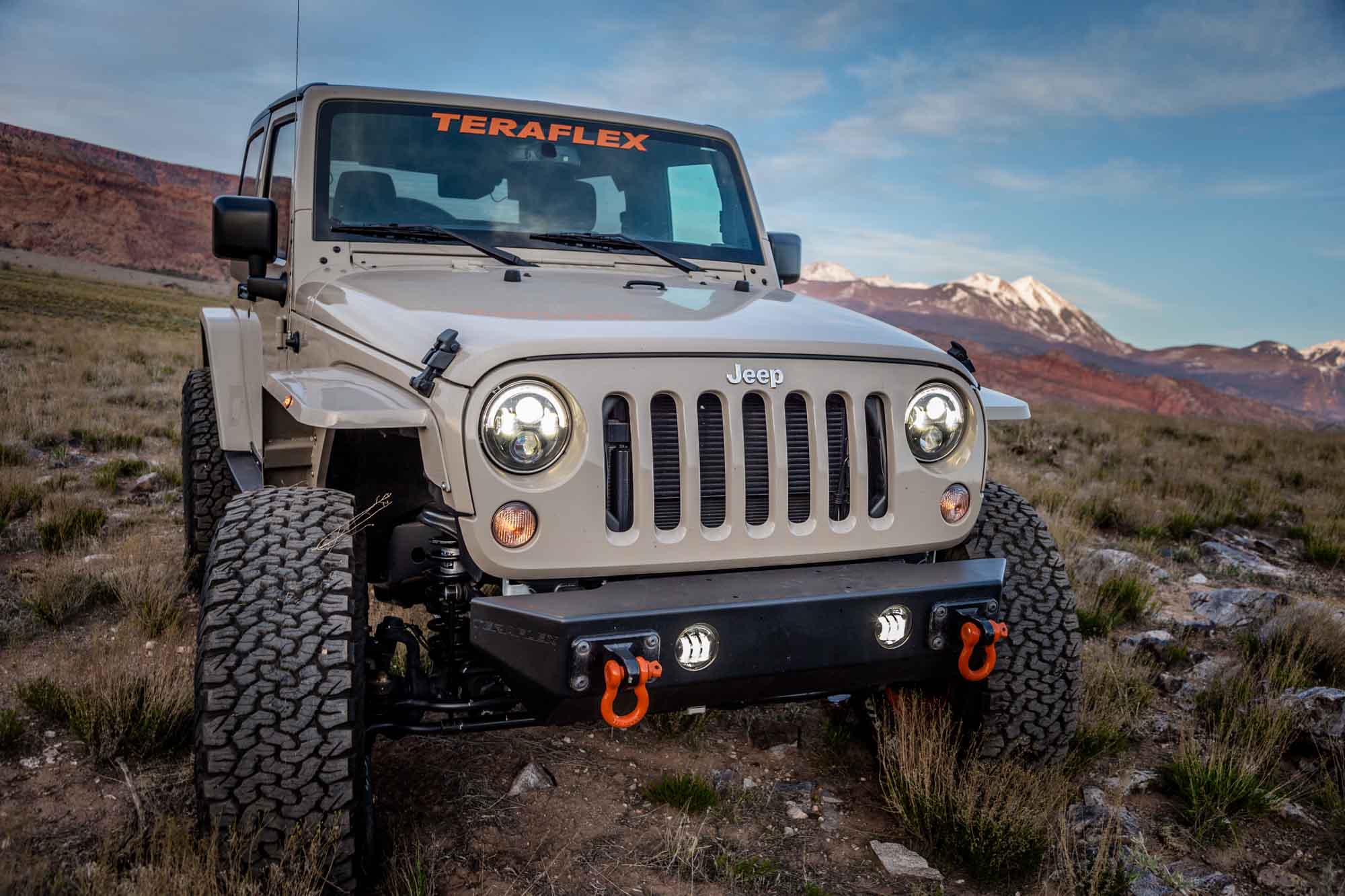 Teraflex offers a host of front bumpers for the JK, including their Explorer model. This ultra-minimalistic, yet functional, bumper is ready for an offset drum winch, such as the Warn Powerplant. Teraflex also offers the Explorer for a centered winch mount, along with options such as a front hoop. It has integrated D-ring mounts that can be accessed from inside or outside the bumper and is compatible with the factory fog lights. Recovery Points Speaking of recovery, you will want to purchase a bumper that either has built-in recovery points or accepts bolt-on hooks or D-rings. The recovery points should tie into the frame as well if at all possible to maximize strength. Which type of recovery point you choose is subjective, but ensure that you have the right recovery gear to accommodate your bumper. That means D-ring shackles for closed recovery points and straps with loops sewn into the ends for hooks. The other big recovery item, of course, is a winch. We prefer bumpers that position winches as low as possible while still clearing the sway bar and steering box. This setup provides a lower center of gravity and improves airflow to the radiator. If you already own a winch, you will want to ensure that the bumper you purchase accepts it, as some winches have different mounting patterns. If you don't have a winch but plan to add one, ensure that the model you are interested in is compatible with your new bumper. Don't have the funds to add a winch at the same time you purchase your bumper? Some companies, such as DV8, offer cover plates for a clean finish without the use of a winch. These plates can then be unbolted down the road when you do add a winch to the front of your Jeep. Mounting Wranglers benefit from exposed front frame rails, which makes bumper mounting easier than other SUVs and trucks. Most bumpers bolt-on in place of the factory bumper and some even retain the factory hardware. Other bumpers add stronger hardware, or more bolts, for a more secure installation, particularly when subjected to the stresses of winching. Some bumpers, such as Poison Spyder Customs' Crawler front bumper, require removal of the crash bar under the front frame horns. This step is irreversible, but if maximizing ground clearance and approach angle are priorities to you, this is a great way to achieve those goals.  ARB's new Bondi Deluxe Winch Bumper is recovery ready with two highly-visible red chassis mounted, rated recovery points and centrally-located recovery jacking points. An integrated winch cradle can be separated from the bumper for an easier install. The bumper comes with mounts for various styles of driving lights or antennas. Press-formed apertures in the outer wings provide fog light surrounds suitable for retention of the OE fog lights. The single-piece, press-formed center pan is complemented by a bash plate and a low-slung forward-facing 3-inch main hoop. 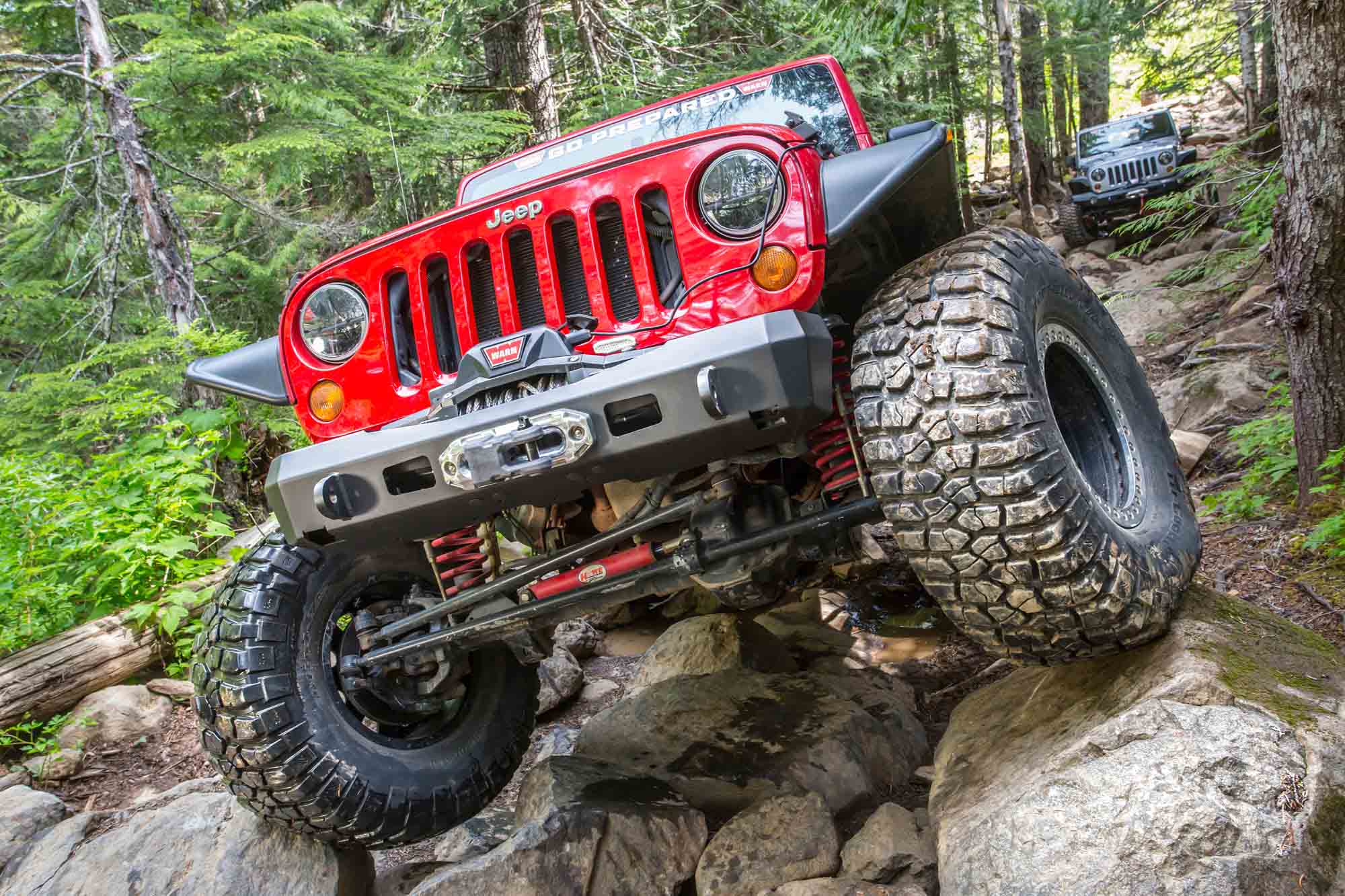 The narrow design of theWarn Elite Series Stubby Front Bumper provides maximum tire clearance and increases approach angles for big obstacles. Designed, engineered, and made in the USA, the Warn Elite Series Stubby Front Bumper offers an integrated winch mount and a minimalist sytle. The flat black powder-coated finish features a five-step pretreatment process with zirconium nanotechnology to withstand 408-hour salt spray testing and excellent UV protection. Integrated jack points and precision welded eyelets round out the host of features. Finish Most bumpers come powder coated, but some are just painted, or even ship with a raw finish. Powder coating is not cheap, so make sure that you know what you are getting before you order. Powder coating can be single-stage, two-stage, or three-stage. More stages mean a more involved process but stand up to the elements better than a single stage. UV protection is also something to look for in a finish to ensure that it looks as good a year from now as it does the day you buy it. The other word of advice we would offer is that powder coating from different manufacturers won't necessarily match. Gloss, satin, matte, and wrinkle are just a few of the powder coat finishes that are available in black. Other Features While a winch is the most popular accessory to add to a front bumper, it is far from the only one. Tabs for lights, recessed light mounts, and tubes are all popular options. Tubular hoops help protect the grille and radiator from impact, and also provide a place to mount lights. Some bumpers come with hoops welded on or bolted-on as an option. Like so many aspects of a bumper, tubular hoops are a matter of personal preference. Once you decide what qualities you want in a bumper and prioritize those features, finding the right brand and model for you becomes a much easier process. 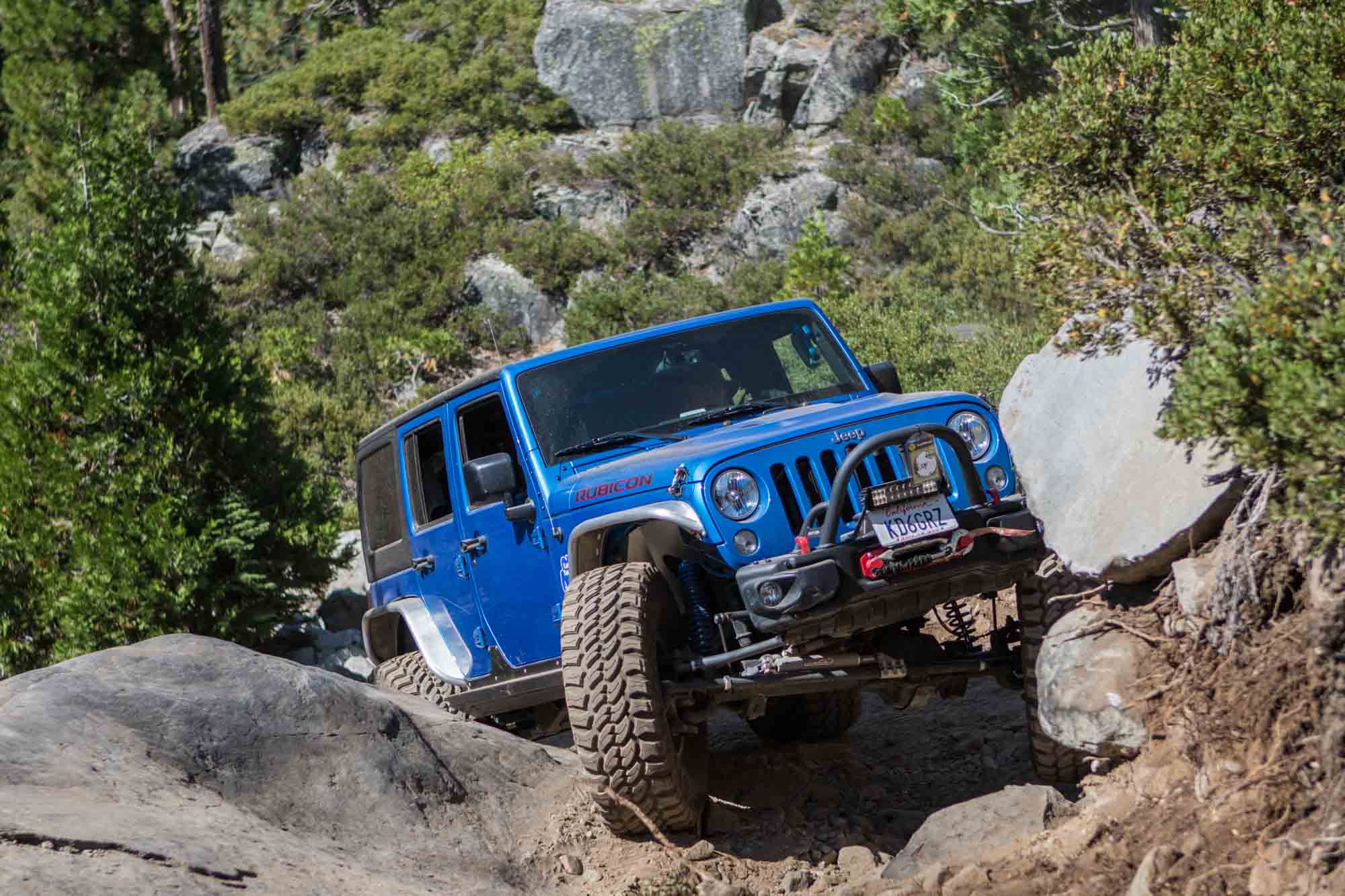 Running a bumper that is only as wide as the frame rails allow the tires to grab rocks as you climb up obstacles, and doesn't hinder approach angle. The tradeoff is that narrower bumpers leave the fenders and sheet metal more exposed. If you are running aftermarket fenders that are stronger than the stock plastic fenders, this is less of an issue since they can generally take the abuse. 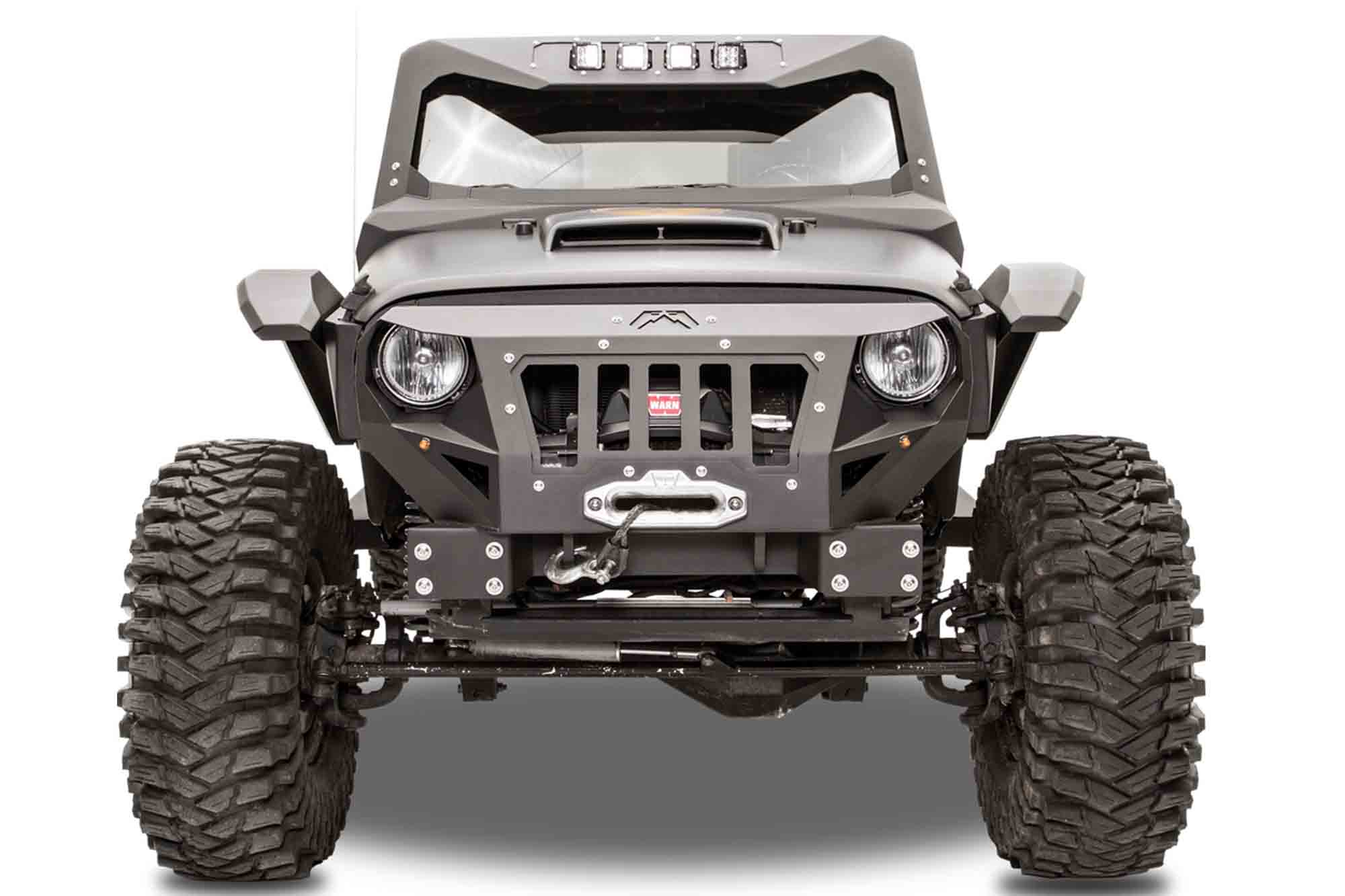 We can't do a story on Wrangler bumpers without mentioning Fab Fours Grumper. Combining both grill and bumper, the Grumper includes four removable inserts allowing for different color options, integrated D-Ring mounts, angry eye headlight cutout, and a winch mount all in one. The stubby Grumper maximizes tire clearance and is made from 11-gauge steel that is finished with a two-stage matte black powder coat finish. Products We Used In This Article |
|